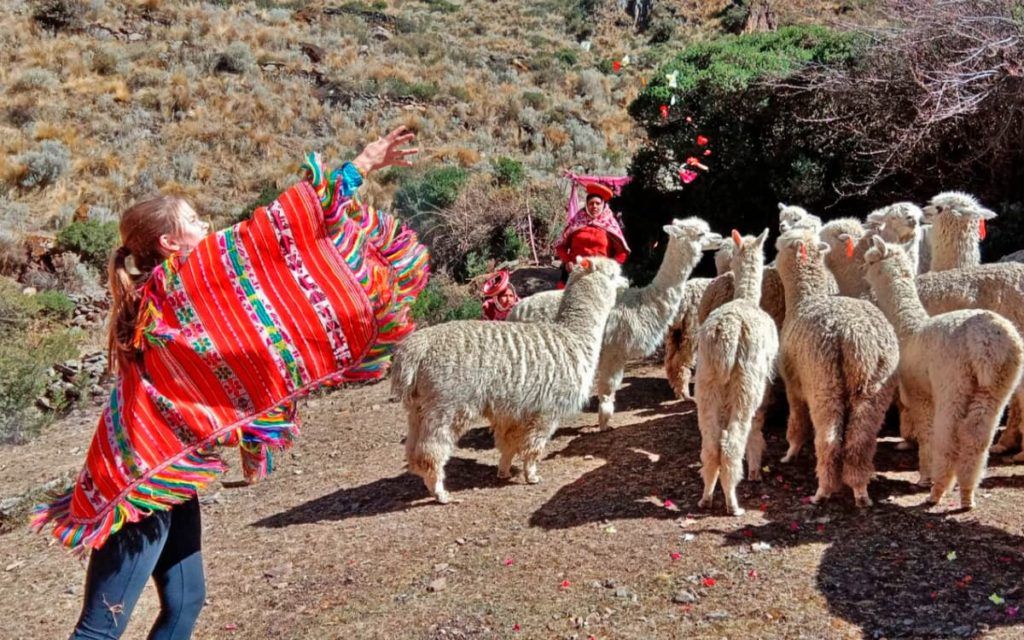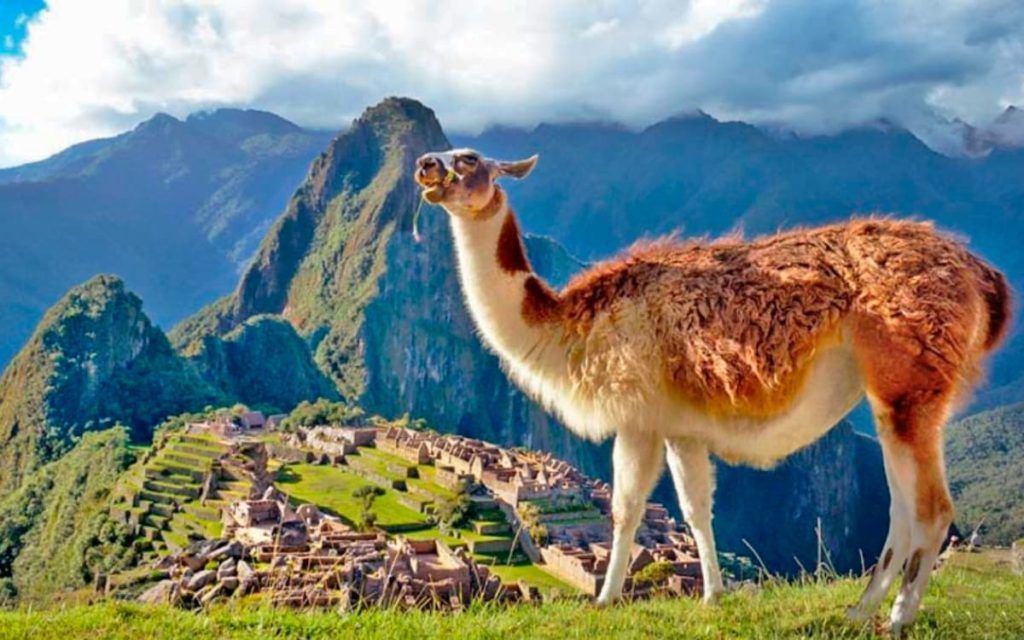The llama is a domesticated South American mammal, a descendant of the guanaco. The indigenous peoples of South America have used it as a pack and transport animal for thousands of years. Its origin is North American and it appeared there approximately 40 million years ago, but the populations migrated to their current ranges about 3 million years ago. They later became extinct from North America.
This species is a member of the Artiodactyla order, the Camelidae family and the Lama genus.
Description
The llama has a long, slender neck and thick fur that ranges from dark beige to white, although the most common pattern is reddish-brown with white or yellow spots. The face is narrow with round ears and a cleft upper lip. It has 32 teeth, of which its lower incisors protrude. Its legs are provided with 2 toes with thick padding on the soles.
It has a large amount of hemoglobin and its red blood cells are oval. This is an adaptation to allow survival in low oxygen environments, since the flame spends its life at high altitudes.
This camelid weighs 130 to 200 kilograms and is approximately 1.7-1.8 meters tall.

Llama Habitat:
The llama is not an animal that can be found in nature given its status as a domesticated species. Its natural Llama Habitat corresponds to the Andean mountains of South America, precisely in Argentina, Bolivia, Ecuador, Peru and Chile; but today they are also found in North America, Europe and Australia.
The Llama Habitat is the highlands of the Andes and the Altiplano of Peru, in the middle of temperate climates and at altitudes of approximately 4,000 meters above sea level.
Feeding of the Llama:
The herbivorous diet of the llama is mainly composed of lichens, shrubs and almost any type of vegetation that you find in the mountains. Water is almost always obtained from the vegetables you eat. When he drinks it, he is able to swallow 2-3 liters in one sitting. Digestion consists of a longer process than in mammals because it is a ruminant. Therefore, she has to regurgitate her food and pass it through her 3 stomachs.
Behavior of the Llama:
The flame manifests a general sociability. Their life passes within groups made up of 20 individuals, of which about 6 are females with their young. The dominant male can be aggressive with other males to defend her territory and physical encounters occasionally occur.
Llama Spit
The Llama is famous for spitting, this it does to defend itself. The Llama Spit is made up of substances digested by the stomach, if it makes contact with the eyes, it can be very risky. If Llama feels threatened, it is safe to Spit, kick or bite the intruder who dares to approach its domain or dominated.
Reproduction of the Llama:
The male llama reaches sexual maturity at 3 years of age, while the female begins to mate when it reaches its first year of life. Thanks to her polygamy, the dominant male forms a harem of around 6 females in a given area; it does not allow other males to enter its territory.
Mating occurs in late summer or early fall and is done with the male and female lying down, for an estimated time of 20 to 45 minutes. 24 to 36 hours after copulation, the female releases a fertilized egg that will give rise to a small flame. Gestation lasts about 350 days and only 1 calf weighing 10 kilos is born regularly, with the ability to walk and run 1 hour after being born. In view of the fact that the mother cannot lick the baby due to its short tongue, she only caresses it and makes sounds. The calf is suckled until the fourth month of birth.

Difference between Llama vs Alpaca
The main difference between Llama vs Alpaca is the fact that they are of different species: Lama glama and Vicuña pacos. The origin of llamas and alpacas is a controversial topic among scholars. As we have already explained, the high rate of hybridization made the study of species very difficult. Despite the similarities, according to the cited article from the Revista Chilena de Historia Natural [2], in fact, genetically speaking, guanacos are closer to llamas, while vicuñas are closer to alpacas at the chromosomal and taxonomic.
Llama vs Alpaca
Still, without having to look at the DNA, there are some clearly noticeable differences between the alpaca and the llama:
- Size: an alpaca is clearly smaller than a llama. The same goes for weight, llamas are heavier than alpacas.
- Neck: Keep in mind that llamas have a longer neck than alpacas and can exceed the size of an adult human.
- Ears: While llamas have long, pointed ears, alpacas have rather rounded ears.
- Snout: Alpacas have a longer, more protruding snout than llamas.
- Fur: the wool of the llama is rougher.
- Personality: Alpacas are more shy around humans, while llamas are known to be outgoing and even “sassy.”











